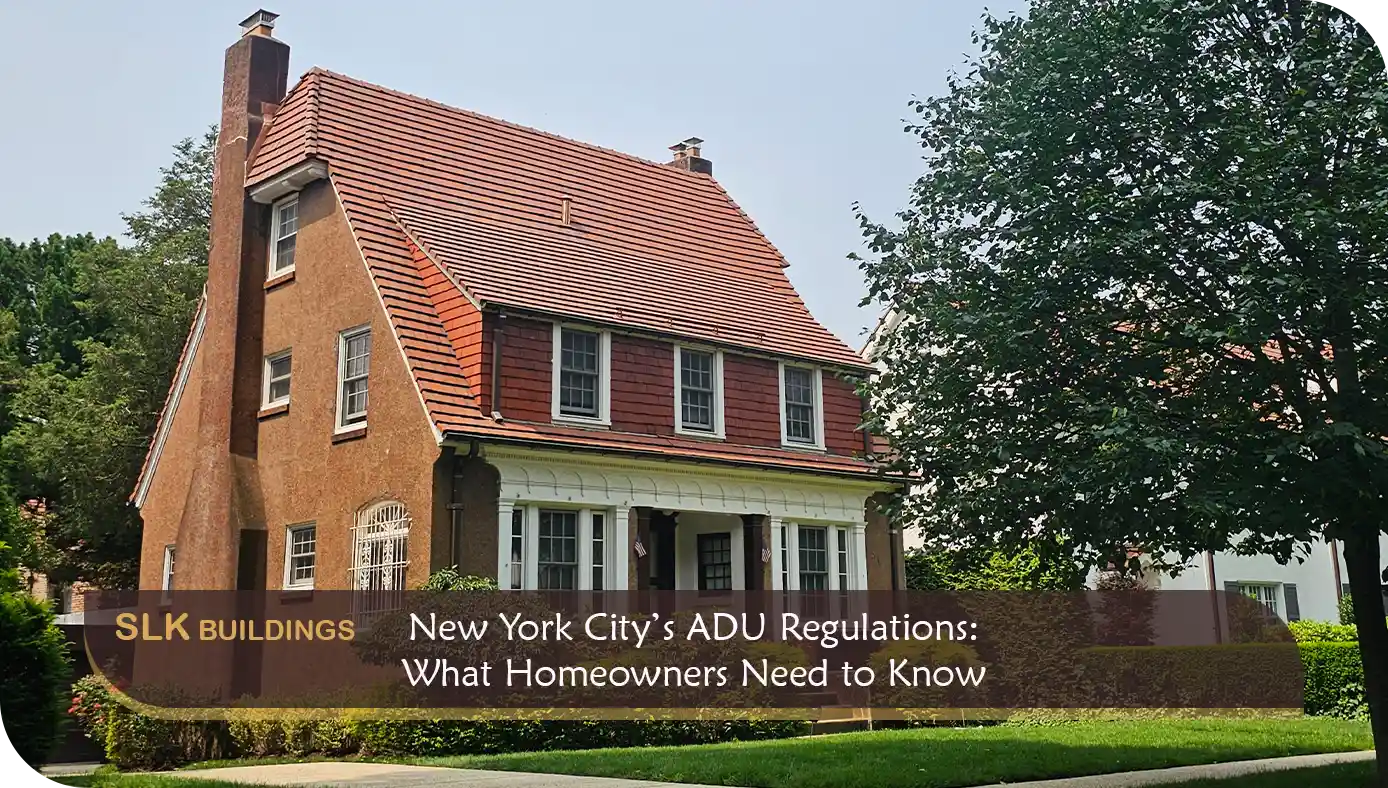WHAT HOMEOWNERS NEED TO KNOW ABOUT NEW YORK CITY’S ADU REGULATIONS

WHAT HOMEOWNERS NEED TO KNOW ABOUT NEW YORK CITY'S ADU REGULATIONS
As the demand for housing continues to grow in New York City, homeowners are increasingly looking for ways to maximize the use of their properties. One solution gaining popularity is the creation of Accessory Dwelling Units (ADUs), which offer an opportunity to add additional living space while potentially generating rental income. However, navigating the complex web of regulations governing ADUs in the city can be a daunting task for homeowners. Here’s what you need to know to navigate New York City’s ADU regulations effectively.
RELATED ARTICLES
- Plus One ADU
-
What is ADU Housing? A Comprehensive Guide to Accessory Dwelling Units
-
Rental Income Opportunities: ADU Development in New York City
-
Multi-generational Living: ADU as a Solution for NYC Families
-
Design Considerations for NYC ADUs: Making the Most of Limited Space
- How to Qualify for Plus One ADU (Accessory Dwelling Unit)
-
Unlocking New Opportunities: Exploring NYC DOB’s Accessory Dwelling Units (ADUs)
New York City's ADU Regulations: What Homeowners Need to Know
Why Choose SLK Buildings?
- Proven Track Record
- Diverse Clientele
- Integrated Services
- Client-Centric Approach
- Registered Representative
Call Us 212.888.3888
Proven Track Record: Over two decades of successful dealing with NYC Department of Buildings Rules and Regulations.
Diverse Clientele: Trusted by a broad spectrum of clients, from individual property owners, architects, engineers, attorneys, hospitality business owners, project management firms to large scale developers.
Integrated Services: A one-stop solution encompassing consultation, representation, documentation and compliance support. We manages the entire process, from determining applicability to Accessory Dwelling Unit qualification, filing your ADU application, coordinating with our Registered Architect or Professional Engineer partner, to the completion.
Client-Centric Approach: Tailored strategies that prioritized our clients’ unique needs and objectives.
Registered Representative: We are registered Filing Representative with Department of Buildings and Registered Representative with OATH (Office of Administrative Trials and Hearings) and familiar with the Rules of Practice for the OATH Hearings Divisions.
Understanding ADUs
Accessory Dwelling Units, often referred to as “granny flats,” “in-law suites,” or “secondary suites,” are self-contained living units located on the same property as a primary residence. ADUs can take various forms, including converted basements, garages, or standalone structures such as cottages or apartments above garages.
Regulations in New York City
- In New York City, ADU regulations are primarily governed by the Department of Buildings (DOB) and the city’s zoning resolution. As of my last update, which is in January 2022, New York City has made strides in making it easier for homeowners to create ADUs, recognizing their potential to address the city’s housing shortage. However, it’s essential to stay up-to-date with the latest regulations and zoning changes.
Key Considerations for Homeowners
- Zoning Requirements: Zoning regulations dictate where ADUs are permitted within the city and specify requirements such as lot size, setback distances, and maximum unit size. Homeowners must ensure that their property meets all zoning requirements before proceeding with an ADU project.
- Building Codes: ADUs must comply with New York City’s building codes to ensure safety and habitability. This includes requirements for structural integrity, fire safety, electrical wiring, plumbing, and ventilation.
- Permitting Process: Homeowners must obtain the necessary permits from the Department of Buildings before constructing or converting an ADU. The permitting process can be complex and may involve multiple steps, including plan review, inspections, and approvals.
- Legalization of Existing Units: Some homeowners may already have unauthorized ADUs on their property, such as illegal basement apartments. In such cases, it’s crucial to work with the city to legalize these units and bring them into compliance with all relevant regulations.
- Affordability Requirements: In certain cases, the city may impose affordability requirements on ADUs created through government-sponsored programs or incentives. Homeowners should be aware of any affordability obligations associated with their ADU project.
Seeking Professional Guidance
Given the intricacies of New York City’s ADU regulations, homeowners are encouraged to seek professional guidance from architects, engineers, and legal experts familiar with local zoning laws and building codes. These professionals can help navigate the regulatory landscape, ensure compliance, and streamline the permitting process.
Creating an Accessory Dwelling Unit in New York City can be a viable option for homeowners looking to increase their property’s value and generate additional income. However, it’s essential to understand and comply with the city’s ADU regulations to avoid costly delays, fines, or legal issues. By staying informed and seeking professional guidance, homeowners can navigate the process with confidence and successfully realize their ADU goals in the Big Apple.
New York City's ADU Regulations: What Homeowners Need to Know
Seeking Professional Guidance
Navigating New York City’s Department of Buildings (DOB) and NYC Housing Preservation & Development regulations for Accessory Dwelling Units can be complex and time-consuming. Homeowners and property owners are strongly encouraged to consult trusted architects, engineers, or legal advisors familiar with local zoning laws, building codes, and permit requirements. Partnering with experienced professionals like **SLK Buildings** ensures you stay compliant, avoid costly delays, and complete your ADU project with confidence. From initial feasibility studies and code compliance reviews to full DOB filing and expediting services, **SLK Buildings** is here to guide you through every step of the process.